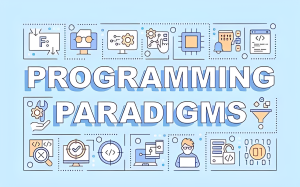Within the fast-moving field of making websites, there are two fundamental ways to do it: Essential Web Improvement and Full Stack Advancement. Imagine these paths as roads, both leading to the same destination but with different routes, landscapes, and challenges along the way. Let’s hop into the Web Development Express and explore the scenic route differences between Basic Web Development and the more complex, intriguing realm of Full Stack Development.
Basic Web Development: The Starter Pack 🚀
Basic Web Development is akin to learning the ABCs of the internet. It’s the fundamental building block, perfect for beginners or those who want to grasp the essentials of web creation without diving too deep into the complexities. Think of it as crafting a beautiful, static billboard.
- HTML (HyperText Markup Language): Usually the spine of each web page. With HTML, developers create the structure of the website, defining elements like headings, paragraphs, and images.
- CSS (Cascading Style Sheets): CSS adds style to the structure. It’s the artist’s palette, allowing developers to choose colors, fonts, layouts, and animations, turning a plain page into an aesthetically pleasing one.
- JavaScript: JavaScript brings interactivity to the web. It’s like the magic wand, enabling developers to create dynamic content, validate forms, and enhance user experience through animations and real-time updates.
- Fundamental Information of Web Browsers and HTTP Conventions: Understanding how browsers work and how web servers communicate is pivotal for any web engineer. It’s like knowing the traffic rules of the internet highway.
Full Stack Development: The Advanced Adventure 🌐
Now, let’s talk about Full Stack Development, the thrilling roller-coaster ride of the web development world. Full Stack developers possess a comprehensive understanding of both front-end (what users see) and back-end (server-side) technologies. They are the architects and engineers of interactive, database-driven websites and applications.
- Front-End Technologies (HTML, CSS, JavaScript): Full Stack developers have mastered these basics, but their knowledge goes deeper. They understand advanced JavaScript frameworks like React, Angular, or Vue.js, allowing them to build seamless, responsive user interfaces.
- Back-End Innovations: Full Stack engineers work with server-side dialects such as Python, Ruby, Java, or PHP. They make server applications, oversee databases, and guarantee that information streams easily between the front-end and back-end.
- Databases: Full Stack engineers are capable in working with databases like MySQL, PostgreSQL, or MongoDB. They understand database design, querying, and optimization, ensuring efficient storage and retrieval of data.
- Version Control Systems: Git and platforms like GitHub are their best friends. Full Stack developers use version control systems to collaborate with other developers, track changes, and maintain a history of their codebase.
- Deployment and DevOps: Full Stack developers know how to deploy applications on web servers, configure server environments, and automate development processes, making their applications robust and scalable.
In a nutshell, Basic Web Development is your starter kit, your training wheels on the journey of web development. It provides you with a strong foundation, perfect for crafting simple websites and gaining an understanding of how the web works.
On the other hand, Full Stack Development is your all-access pass to the web development theme park.It enables you to construct complex, intelligently web applications, dig into databases, and make a consistent client encounter from begin to wrap up.
So, whether you’re content with crafting beautiful static pages or aspiring to create the next big web application, understanding the difference between Basic Web Development and Full Stack Development is the first step towards your exciting web development adventure! 🚀




